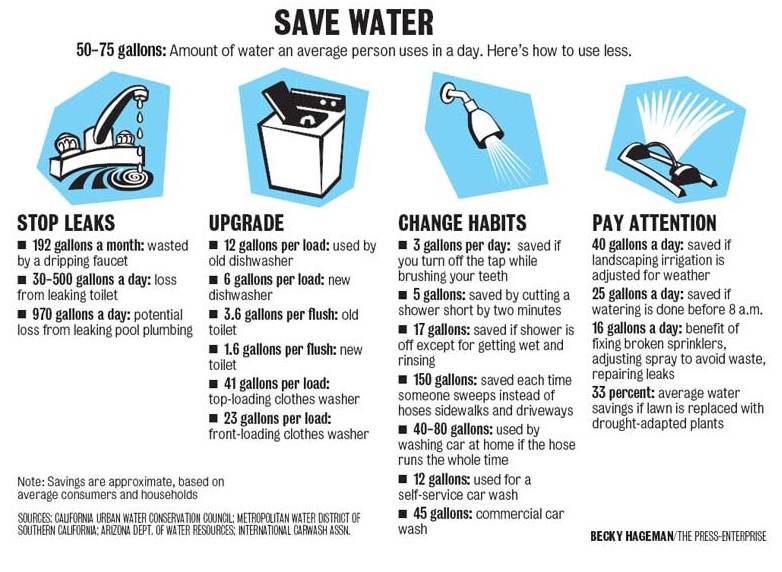As the World’s population nears 10 billion, the worldwide shortages of fresh water will be one of the most pressing environmental concerns in the next 50 years, as expected by environmental scientists.
Businesses differ immensely in their water requirements depending on the products and services that they provide. Conserving water doesn’t often rise to the top of the businesses’ sustainability initiatives, especially in regions where water shortages aren’t everyday concern. But it should get more attention. Conservation of water in the workplace can reduce water and utility bills.
Some of the easy tips to conserve water at workplace include the following:
- Go low-flow: Make sure that whether restroom or break room faucets or showers are outfitted with low-flow restrictors. A low-flow faucet aerator emits less than 1.5 gallons of water per minute whereas standard faucets emit 2.2 gallons of water per minute. Older toilets consume nearly 5 gallons of water per flush, while newer high-efficiency ones use 2 gallons.
- Check water meters to detect water leaks: The most common types of leaks found in workplaces include worn toilet flappers, leaking showerheads and dripping faucets. Always keep your business or workplace leak-free by repairing dripping faucets, showerheads and toilet flappers.
- Maximise the use of natural vegetation and establish smaller lawns: For your lawns and landscaping, ask your local nursery for tips about plants with low water demand. Consider planting more trees, ground covers, shrubs, and less grass. Shrubs and ground covers provide greenery for much of the year and generally demand less water. Make use of native plants in flower beds. Native plants adapt to rainfall conditions and often provide good wildlife habitat.
- Get a water audit: Companies that consume massive amounts of water should consider getting professional help in reducing their water consumption. A commercial water audit examines how much water a business uses and provides detailed information on where opportunities lie for using less water. Such audits can also identify costly water leaks that need to be repaired. Some water companies provide audits to commercial customers for free and even provide rebates for water saving initiatives.
- Purchase water-efficient equipment: There are various types of equipments used by businesses which consume a lot of water. These are also available in water-efficient models or have less-water-intensive alternatives. Using such water-efficient equipments can save a large amount of water at businesses.
For further tips on saving water at businesses, you can contact Thames Water at Thames Water Contact Number.

